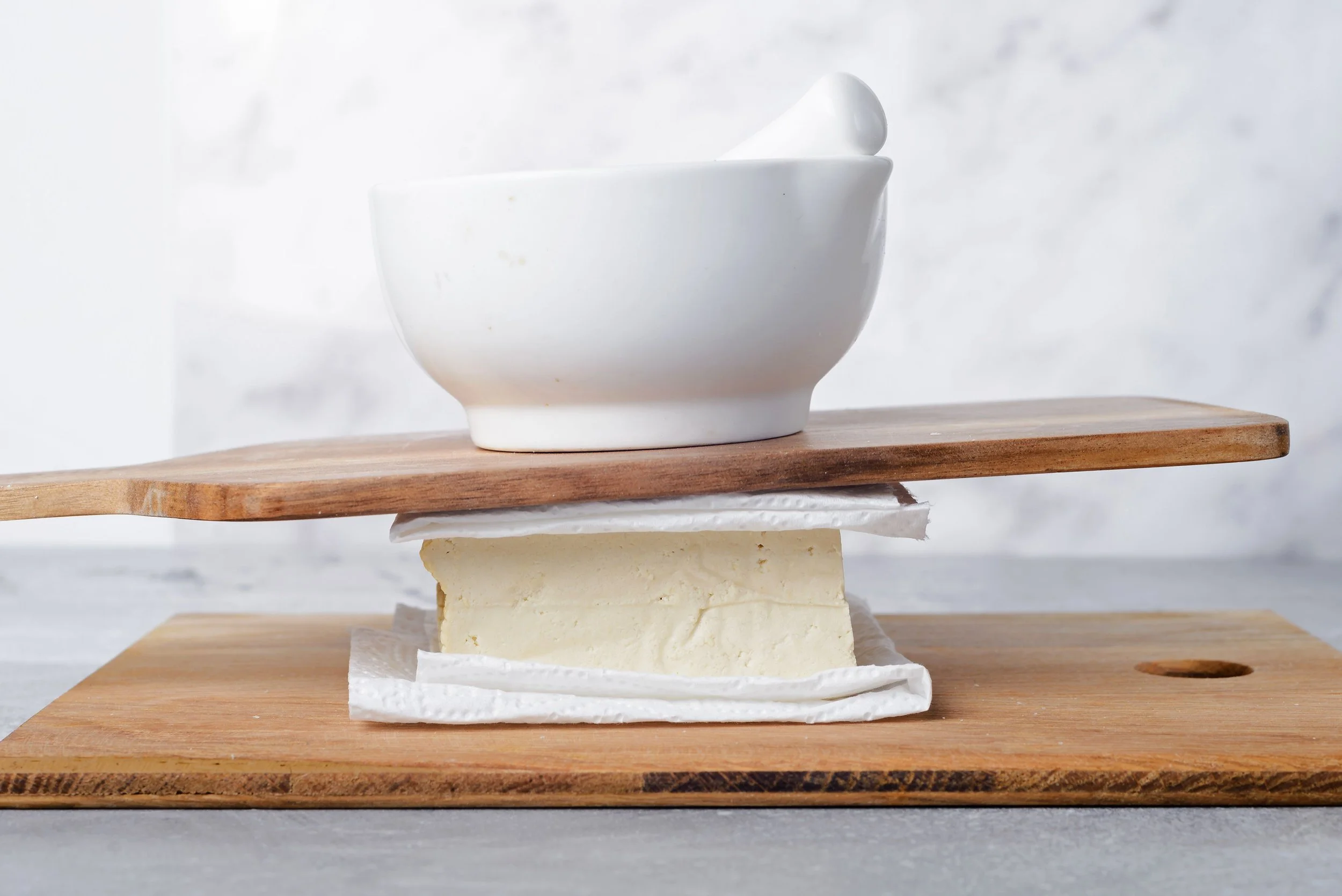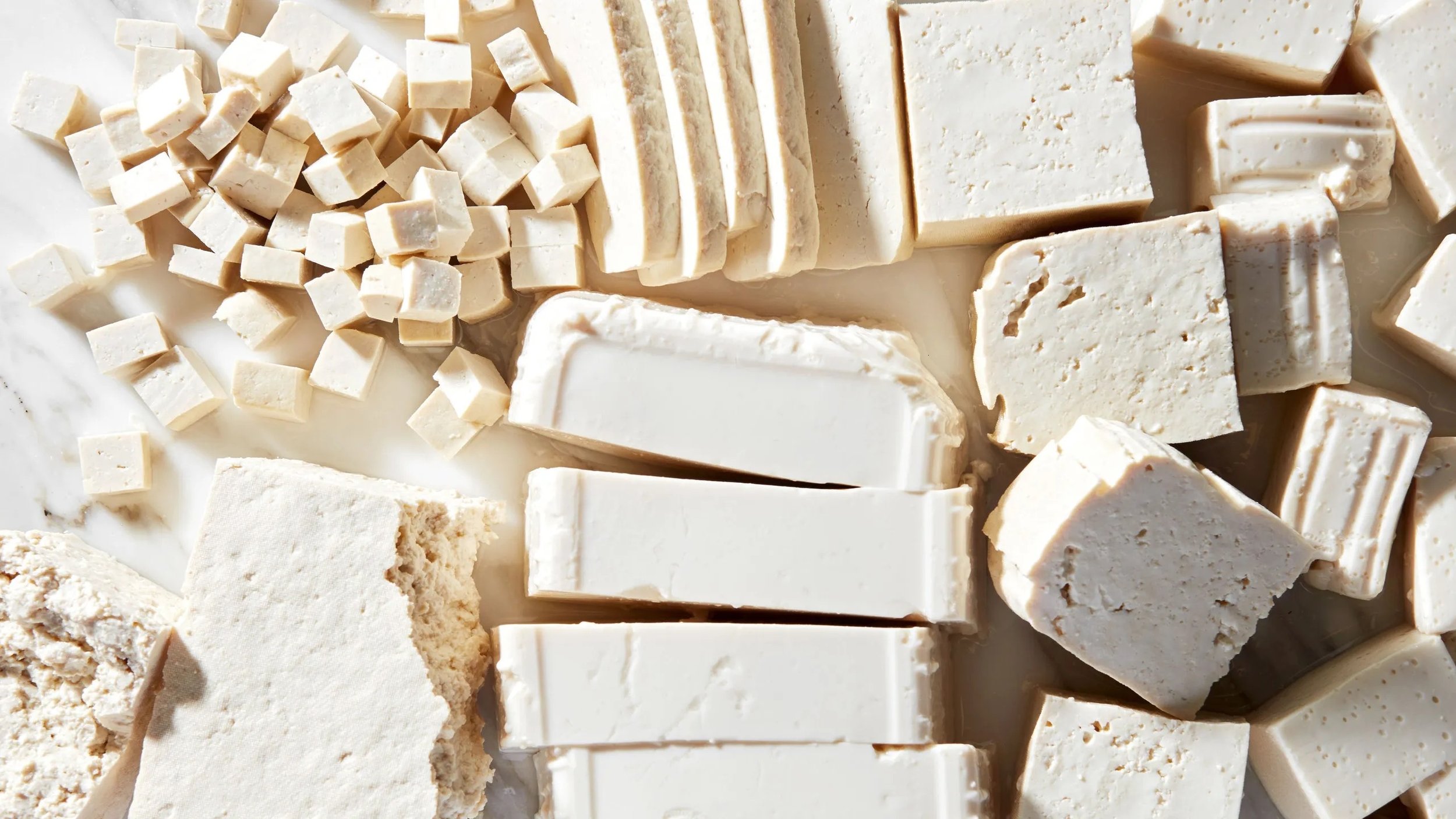3 ways to take your tofu to the next level
Tofu is a staple source of plant-based protein that can take on a multitude of forms—from a crispy chicken alternative to a delicious, dairy-free cheese. But for those new to plant-based cooking, tofu can seem pretty underwhelming. Three tips can improve the cooking experience and the chances of getting a tasty final dish. (Photo Source: Polina Tinklevitch via Pexels)
For recently converted plant eaters, or those curious about the lifestyle, one of the main kitchen struggles can be mastering the art of cooking with tofu. The white, soggy block of coagulated soy milk can be off-putting to those untrained in the art of tofu-prepping. But where some see blandness and boredom, tofu fans see the potential for crispy chicken, taco crumble, and rich chocolate pudding. That blah component makes tofu a blank canvas for all kinds of experimental cooking.
So, what is the secret to delicious tofu? It’s all in the way you prepare it.
First things first: Press your tofu
Pressing your tofu should always be at the top of your when prepping for a tofu-based dish. It removes moisture, improves texture, and can be done with any heavy object you have on hand. (Photo source: The Spruce Eats)
Store-bought tofu comes packed in water to preserve freshness, which means the tofu itself ends up absorbing the water, becoming soft and delicate in the process. But tofu that’s full of water is less likely to absorb spices and flavors. This can also make the cooking process much longer.
Luckily for the home cook, it’s fairly easy to squeeze out the excess water. Simply wrap your block of tofu in a kitchen towel or paper towels. Press down with your hands, or place it between two cutting boards. If you opt for the cutting boards, grab a heavy object and stack it on top.
The amount of pressing time varies with the home cook: Some are content pressing for a few minutes, others prefer at least 30 minutes for a firmer texture. From there, you’re all set to start cooking.
Note: Silken tofu doesn’t need pressing due to its more delicate consistency. Most recipes that call for this type of tofu depend on its natural silkyness. Most times, extra-firm tofu won’t need any pressing either.
1. Freeze your tofu
“Freezing your tofu makes for a delicious, spongy, and chicken-like texture.”
If you’re not wild about the texture of tofu even after pressing, consider freezing it. Freezing your tofu makes for a delicious, spongy, and chicken-like texture. This is all possible thanks to the water content in tofu. When frozen, the water inside expands and forms ice crystals that, when thawed, leave behind tiny holes that make for a chewier texture. The holes also help the tofu absorb more of the spices and marinade during the cooking process.
To freeze your tofu, take your block of pressed tofu and place it on a baking sheet or inside a freezer-friendly container. Leave it freezing for four to six hours or overnight. To thaw, leave it sitting at room temperature, then you’re all good to go.
This method can be used for any type of recipe that requires pressed tofu of the firm variety. Here are just a few recipes to try it out:
2. Fry or bake your tofu
Cooking tofu may sound like an arduous process, but it doesn’t have to be. Most often, the best and quickest tofu dishes require only sautéing or baking. This gives tofu a crunchy exterior that elevates the overall dining experience.
This Orange Ginger Tofu recipe gives you a chance to try your hand at sautéing tofu. It’s also a healthy alternative to your usual takeout order. (Photo Source: Alec Tilly)
Frying tofu can be as easy as throwing it in a skillet with oil and your favorite spices. You can also dice it or crumble it and roll it in a little cornstarch or flour before cooking to crisp it up.
Alternatively, you can air fry your tofu for 15 to 20 minutes at a minimum temperature of 180 degrees; it’s all you need for an audibly crispy bite.
Don’t have an air fryer? No worries! You can reach the same level of crunch by baking your tofu for a minimum of 30 minutes at any temperature between 400 degrees and 450 degrees.
Here are a few dishes to get you started:
3. Season, season, season!
For tofu skeptics, if it’s not the texture that’s the problem, it’s the taste! And it’s true—because tofu doesn't have much flavor on its own, seasoning correctly is crucial for a tasty meal. If you’re new to the world of tofu, you may be apprehensive about which types of spices or marinades to use. But really, there isn’t a “right” way to season it. Feel free to fall back on what you love, whether that be a taco-style seasoning blend, spicy oil marinade, or a classic teriyaki sauce. You can also add tofu to soups or other curry-based dishes. Plus, most of the spices or sauces that work well on animal-based dishes work wonders with tofu as well.
In short, the possibilities are endless. But if you need a little help, here are some of our favorite ways to dress up tofu:
Bonus: Use the right kind of tofu
There are three main tofu types you should be aware of: silken, firm, and extra-firm. For the best cooking results, make sure you use the variety your specific recipe calls for. (Photo Source: Bon Appétite)
A successful tofu experience also depends on the type of tofu used. Depending on the recipe, you may need one of three main tofu types.
Silken tofu: Given its high water content, this is the most delicate form of tofu. It has a silky, almost pudding-like consistency that doesn’t require pressing. Rather than serve as the star of the show, silken tofu is most often mixed within recipes as a thickener or for a smoother texture. Give it a try in our Lemon Poppyseed Scones or Blueberry Muffins.
Firm tofu: This type of tofu lies right in the middle of two extremes: it holds up better than silken because of its lower water content, but is softer than extra-firm. It works best when baked or fried, which gives it a crisp exterior and tender interior. Firm tofu can also be tossed into a salad, as in our Thai-Inspired Tomato Salad, or blended into fillings, see our Garlic Tomato Tart.
Extra-firm tofu: Because of its minimal water content, extra-firm doesn’t require pressing—unless it comes packaged in water. If so, some pressing will help it become more flavorful. As with firm tofu, it can be used in recipes that require baking or frying. The main difference will be in the texture of the final dish, which will be firmer and crispier. It also works well in tofu scrambles and as the main component in homemade vegan cheeses, such as our Tofu Feta Cheese.
As you tackle your next tofu-based recipe, remind yourself to keep an open mind. This soy-based protein source tastes best when you let yourself be surprised by new textures, new flavors, and new experiences.












